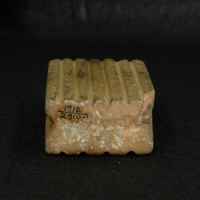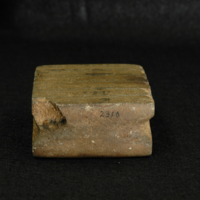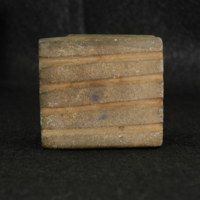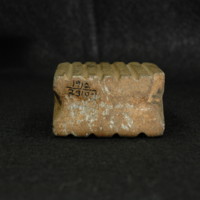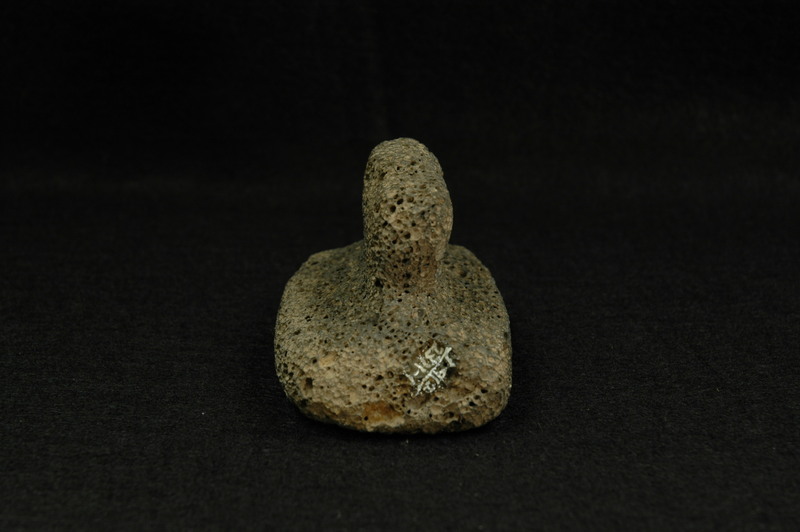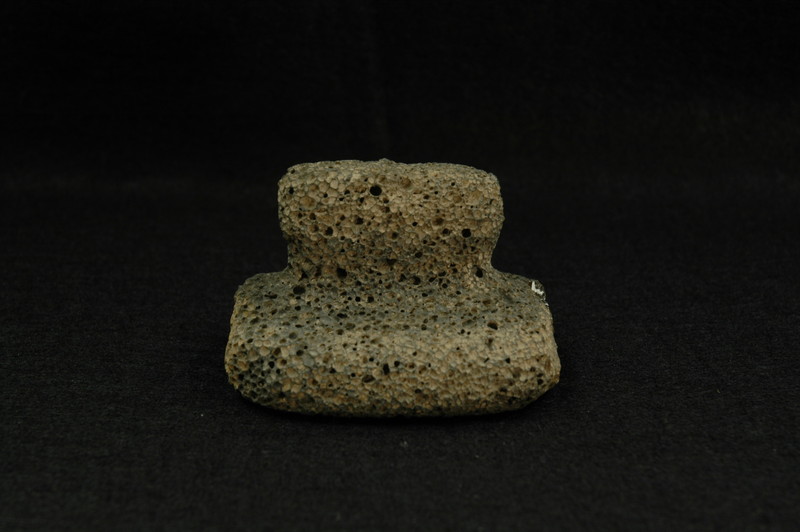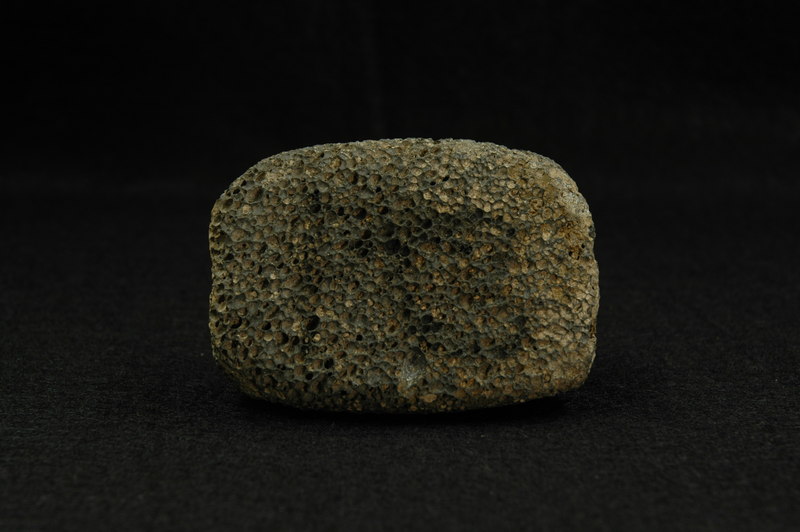Paper Beater
Pre Columbian Paper Beaters, Date:Unknown, Collected in 1912 in Azcapotzalco, Mexico by William Niven; donated to Wesleyan University Museum of Natural History in 1912 by William Arnold Shanklin
Stone beaters like these were used to pound tree bark into amate paper by artisans working in pre-Columbian Mesoamerica.These beaters were discovered in an excavation by William Niven in 1912. They were used to pound the boiled bark of either the mulberry or wild fig tree into amate paper.
Making Amate paper is a simple process, but it is one that takes time and patience. The first step is to strip the bark from the trees. This is done by creating a notch at the bottom of the trunk which allows for the harvester to pull the bark of the tree in long wide stripes. After the bark is dried it is boiled in ash water for 5 hours followed by a cold water soak for 2 days. This process cleans the fibers and breaks them down, making the fiber pliable enough to make amate. Strips of the bark are laid over each other in a crosshatch pattern, ready to be beaten. The process requires both types of beaters. The rougher beater is used for the first round of beating the bark, which smashes all wet bark fibers together to make a rough but solid piece. The second beater with the crevices on its bottom is used to smooth and finish the paper.
Aztec society had a flourishing manuscript industry, which was the backbone of the empire. Amate paper was used in everything from business records to historical documents to religious didactics to calendars, also known as tonalpohualli, like the Codex Laud. These manuscripts created a common sense of community and empowered elites who controlled the controlled the knowledge that these codices held.
These amate paper beaters were discovered in an excavation by William Niven in 1912. They were used to pound the bark of either the mulberry tree or the wild fig tree into amate paper.
Making Amate paper is a simple process, but it is one that takes time and patience. The first step is to strip the bark from the trees. This is done by creating a notch at the bottom of the trunk which allows for the harvester to pull the bark of the tree in long wide stripes. It must then be left to dry. After that it is boiled in ash water for 5 hours and then soaked in cold water for 2 days. This cleans the fibers, while breaking them down and making them pliable. The bark is then pulled into thin strips, these strips are laid over each other in a crosshatch pattern. It is at this point where the paper beaters come into play. The process then requires both beaters. The rougher beater is used for the first round of beating the bark, which smashes all wet bark fibers together to make a rough but solid piece. The second beater with the crevices on its bottom is used to smooth and finish the paper.
Aztec society had a flourishing manuscript industry that created everything from business records to historical documents to religious didactics to calendars, also known as tonalpohualli, like the Codex Laud. These manuscripts created a common sense of community and empowered elites, who controlled the knowledge that these codices held. It is fair to say then that Amate paper is a core part of Aztec society.

